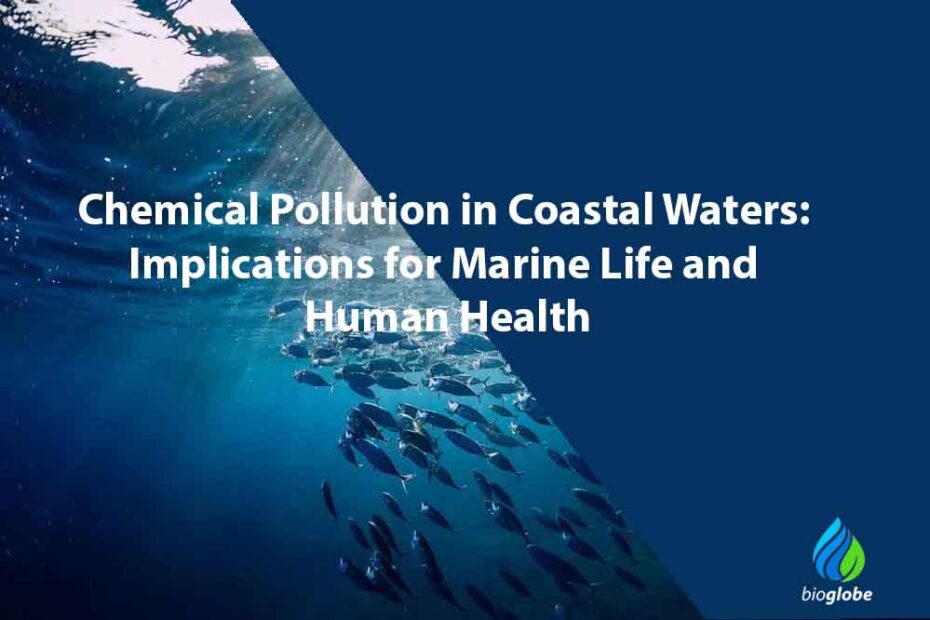This article discusses the consequences of chemical pollution in coastal waters considering both the effects on marine life and the potential risks to human health.
Chemical Pollution in Coastal Waters: Implications for Marine Life and Human Health
Coastal waters are home to a diverse array of marine life, and they provide important economic and recreational benefits to humans. However, these waters are also facing a growing threat from chemical pollution.
Chemical pollution can come from a variety of sources, including industrial discharges, agricultural runoff, and improper waste disposal. Once in the water, these chemicals can have a range of harmful effects on marine life. For example, heavy metals can disrupt the reproductive systems of fish and shellfish, making it difficult for them to reproduce and sustain populations. Pesticides can also harm marine life, and they can even kill some species outright. Pharmaceuticals that are carelessly disposed of can also contaminate coastal waters, and these chemicals can have a variety of negative effects on marine organisms.
In addition to harming marine life, chemical pollution can also disrupt the delicate balance of coastal ecosystems. For example, pollutants can alter the pH levels of water, leading to a phenomenon known as ocean acidification. This process can harm marine organisms, especially those with calcified structures such as coral reefs, shellfish, and plankton. Ocean acidification can also make it difficult for these organisms to reproduce and survive.
Chemical pollution can also pose a direct threat to human health. Coastal communities rely on coastal waters for sustenance, tourism, and recreational activities. However, consuming contaminated seafood exposes individuals to hazardous substances such as heavy metals and persistent organic pollutants. These toxic substances can accumulate in the human body over time, increasing the risk of long-term health problems such as cancer, reproductive problems, and neurological disorders. Additionally, engaging in water-related activities, such as swimming or water sports, in polluted coastal areas can lead to skin irritations, respiratory problems, and gastrointestinal illnesses.
The problem of chemical pollution in coastal waters is a serious one, and it is important to take steps to address it. There are a number of things that can be done to reduce chemical pollution, including:
- Implementing stricter regulations on industrial discharges and agricultural runoff
- Improving wastewater treatment systems
- Promoting sustainable fishing practices
- Educating coastal communities about the risks of chemical pollution
- Increasing research and monitoring of chemical pollution
By taking these steps, we can help to protect coastal waters and the marine life that depends on them.
What You Can Do to Help
There are a number of things that you can do to help reduce chemical pollution in coastal waters. Here are a few tips:
- Reduce your use of pesticides and other harmful chemicals.
- Dispose of hazardous waste properly.
- Support businesses that are committed to environmental sustainability.
- Get involved in your community and advocate for policies that protect coastal waters.
By taking these steps, you can help to make a difference for the health of our planet and its inhabitants.
Questions
Question 1: What are the main sources of chemical pollution in coastal waters?
Answer 1: The main sources of chemical pollution in coastal waters include:
- Industrial discharges
- Agricultural runoff
- Improper waste disposal
- Runoff from roads and parking lots
- Oil spills
- Leaks from underground storage tanks
- Sewage treatment plants
- Dredging and other construction activities
- Air pollution that falls back to the water
Question 2: What are the main effects of chemical pollution on marine life?
Answer 2: Chemical pollution can have a variety of harmful effects on marine life, including:
- Death
- Reproductive problems
- Developmental problems
- Behavioral problems
- Cancer
- Neurological disorders
- Immune suppression
- Organ damage
Question 3: What are the main effects of chemical pollution on human health?
Answer 3: Chemical pollution can have a variety of harmful effects on human health, including:
- Cancer
- Reproductive problems
- Developmental problems
- Behavioral problems
- Neurological disorders
- Immune suppression
- Organ damage
- Skin irritation
- Respiratory problems
- Gastrointestinal illnesses
Question 4: What can be done to reduce chemical pollution in coastal waters?
Answer 4: There are a number of things that can be done to reduce chemical pollution in coastal waters, including:
- Implementing stricter regulations on industrial discharges and agricultural runoff
- Improving wastewater treatment systems
- Promoting sustainable fishing practices
- Educating coastal communities about the risks of chemical pollution
- Increasing research and monitoring of chemical pollution
Question 5: What can individuals do to help reduce chemical pollution in coastal waters?
Answer 5: Individuals can help reduce chemical pollution in coastal waters by taking the following steps:
- Reduce your use of pesticides and other harmful chemicals.
- Dispose of hazardous waste properly.
- Support businesses that are committed to environmental sustainability.
- Get involved in your community and advocate for policies that protect coastal waters.
By taking these steps, individuals can help to make a difference for the health of our planet and its inhabitants.


